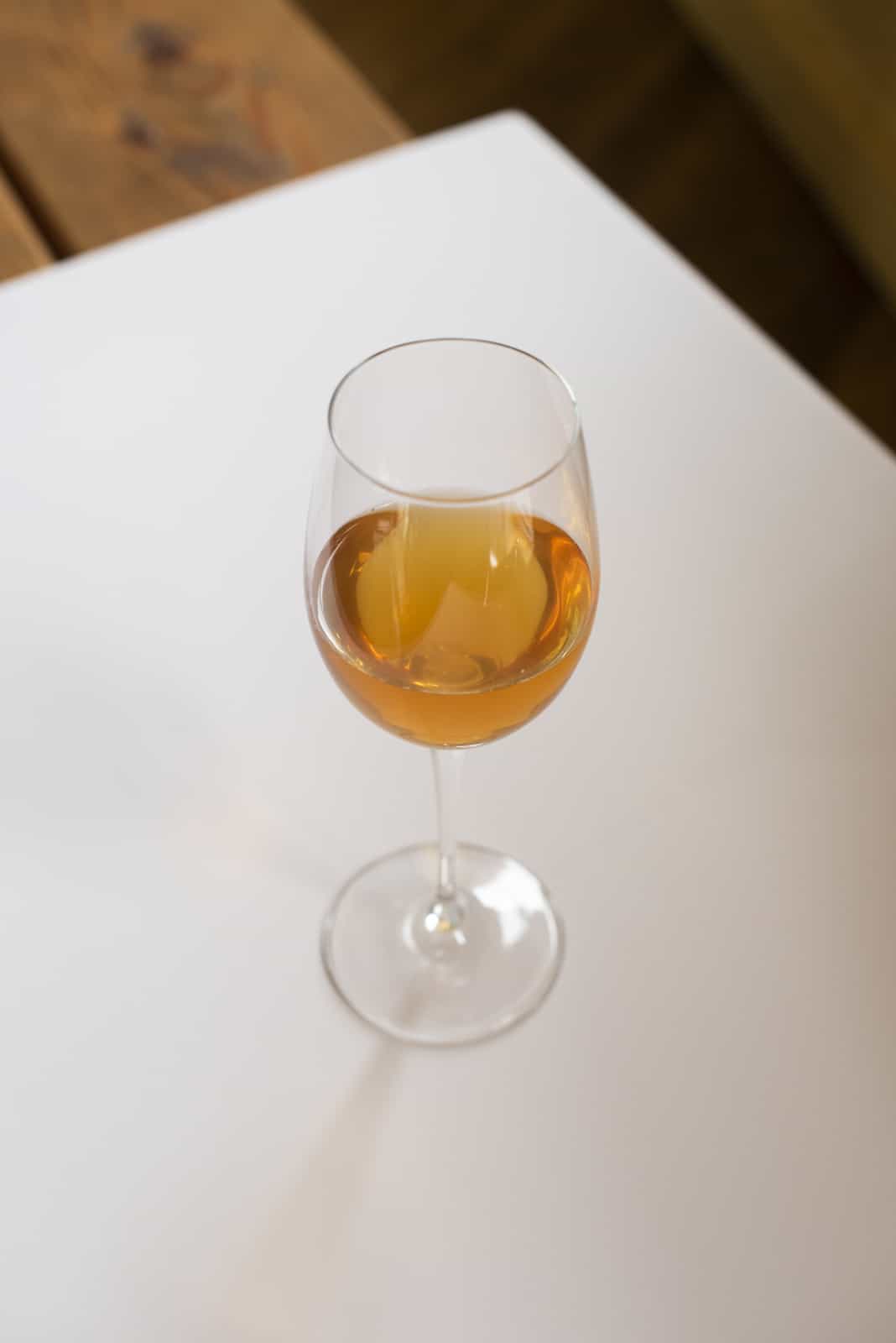PHOTOGRAPHY BY STACEY LAMB
If Billy Joel were writing “Scenes From an Italian Restaurant” today, a summer wine trend might have him singing, “A bottle of white, a bottle of red, perhaps a bottle of orange instead.”
In truth, however, this recently stylish type of wine isn’t new at all. Winemakers have been producing orange wine for thousands of years in the Eurasian country of Georgia, and for hundreds of years in Slovenia and Italy, in particular the northeastern Italian region of Friuli–Venezia Giulia. But that doesn’t mean American drinkers know what it is, says Amanda Spina, the general manager at The Four Horsemen, a three-year-old wine bar and restaurant in Brooklyn with a sizable list of oranges.
“That’s probably the most frequently asked question here,” Spina says. “I always joke that someone could wake me up in the middle of the night from a dead sleep and be like, ‘What is orange wine?’ and I’d be ready to go, ‘Well, orange wine is…’”
To put it simply, orange wine is white wine made like a red wine—the juice of white grapes is macerated with the skins, which imparts colors and tannins. (It’s also sometimes called skin-contact wine.) Think of it as a sort of cousin to rosé, which is typically made by limiting the amount of skin contact a red wine gets.
“Both rosé and orange wine, if we’re generalizing, tend to be easy to drink with or without food and can kind of carry you through your meal in a way that not all big reds can and not all super-crisp whites can,” Spina says. “Usually, rosé doesn’t see enough skin contact to impart real tannins—it’s almost like rosé is orange wine lite, in a sense.”
As with rosé, orange wines would seem easy to pigeonhole, but they can run from very clean and lightly fruity to funkily reminiscent of sour beer. “Just like white or red wine, it runs the gamut,” Spina says. “You can get some with a long skin maceration that are really austere and structured, and then some from warmer climates that taste like tropical fruit. Pinot grigio, when it’s skin-macerated, turns hot pink, and we think that grape works great with skin contact. Malvasia tends to be a bit more perfumed and tropical, and adding that structured texture makes a complex final product.”
Perhaps the only thing more complex—at least for the Piano Man—is figuring out a lyric to rhyme with orange.
Three To Try
Spina’s notes on three Italian orange wines from The Four Horsemen’s list
Franco Terpin
Sauvignon Blanc, 2011, Friuli, $27
“Sauvignon blanc tends to be really flowery and, for lack of a better word, kind of pretty and perfumed, and adding that tannic structure balances it out in a really nice way.”

Foradori Fuoripista
Pinot Grigio, 2016, Trentino, $50
“This is from one of our favorite winemakers, Elisabetta Foradori. She’s also from Northern Italy but not as far east. Her wine always has a lot of finesse, and this one is especially successful.”

Paraschos Ribolla
Gialla, 2016, Friuli, $33
“I think this is new on the scene. It’s a little rounder, a little bit of pitted fruit that’s really nice, and, again, the textural component balances that out.”

